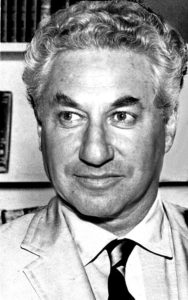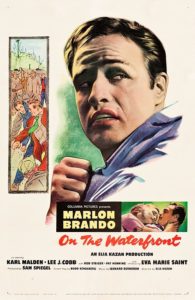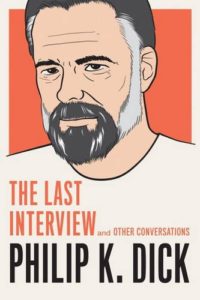
Not rethinking realism, as in rethinking philosophy’s single, objective reality, hard as rocks and nails. No, I mean rethinking realism in the sense of questioning the elevation of literary realism over the many other forms of fiction.
Realism has long been the go-to form in literature for telling a story a certain way. An entire literary style—Naturalism—sprung from the sense that Romanticism had gone too far and produced a literature divorced from the world as commonly experienced. The pendulum later shifted the other direction, and for a period of time realistic literature was derided as bourgeois and reactionary. Since World War II, with the rise of creative writing programs and a reinvigorated enforcement of upper-class distinctions, kitchen-table realism has returned to the pinnacle of literary loftiness in America.
So it’s funny to me that realism is also so important in popular entertainment. This is nowhere as true as with television, which is obsessed with depicting reality—from the “you are there”-style news reporting to game shows branded as “reality TV.” When the writers of TV’s M*A*S*H killed off Col. Henry Blake in a season finale, they were inundated with letters from outraged viewers. The Emmy award-winning writing team’s response was, “Well, that’s reality.” American auteur Robert Altman famously ends Nashville with an out-of-the-blue assassination of a central character. Why? Because, he explained, that’s reality.
It’s not that these plot points are faulty or wrong-headed. My complaint is that the excuse—”It’s reality”—is a lazy defense of artistic choices. Writers should cop to their decision rather than take the passive route and saying reality made the choice for them. Writers should ask themselves if a “realistic” moment is adding to, or subtracting from, the story.
Anyone who’s attended a creative writing class, workshop, or MFA program is familiar with the high ground presumed by realism. The trendy term is “psychologically realistic fiction.” In writing programs, names like Raymond Carver, Amy Hempel, Tobias Wolff, and Tim O’Brien are tossed out as the zenith of American writing. Students are explicitly encouraged to emulate them, and their importance is implicitly signaled by their repeated presence in syllabi and required-reading lists. (I’ve read “The Things They Carried” at least eight times over the course of decades of writing groups and classes.) These authors are lionized for many reasons, but importantly, they all wrote about reality.
(There are two exceptions worth mentioning: One is magical realism, although its high regard in writing programs is tied up with identity politics. The other is Borges, whom I jokingly refer to as science-fiction for MFA students. It must be noted that both exceptions originate from outside the United States. Kafka, incidentally, is read and praised in writing programs as well, but not in such a way as to encourage emulation—I suspect my instructors liked the idea of Kafka more than Kafka’s output.)
Look at how so much literary fiction operates. Protagonists tend to be thoughtful, rational, and deliberative—often, they exhibit little to no affect. Characters in opposition tend to be boorish, thoughtless, and emotional. Dialogue is either flat and unadorned, or snappy, like the patter of a stand-up comic. Scenes flow as one character uttering a brief line, followed by paragraphs of rumination. The other character responds, and more paragraphs of rumination.
The prose might be good—it might even be inspired—but is this realism? Going through contemporary literary magazines, reading one story after another, I’m not sure one will find a lot of psychological realism, in the sense of psychiatry’s DSM-5.
Genre fiction is not immune either. Too often connoisseurs of hard-boiled detective fiction and tough-guy novels claim their favorite authors are superior because of their attention to realism. Raymond Chandler’s “The Simple Art of Murder” is wonderful and insightful criticism, but at its heart is a trashing of the classic British mystery because “fiction in any form has always intended to be realistic.” It’s one of the few arguments in the essay that I question.
Janet Burroway wrote, “Sometimes reality doesn’t make for good fiction.” It’s a tough lesson to learn, and one that even seasoned writers fail to grasp.
After all, there is no widely-accepted maxim stating the primary purpose of story is to reproduce reality. Fiction is supposed to be an expression of a writer’s inner state, not a dry report of the who, what, where, and when. Besides, why do we need to reproduce reality with such fidelity? We’re soaking in it. If you want reality, put down your phone or leave your computer screen. You have returned to reality, effortlessly.
In a writing class I attended, one of the students was a fan of horror, particularly H. P. Lovecraft and Robert Chambers’ The King in Yellow. At an end-of-semester presentation before the class, he expressed frustration at the hard-realism reading list we’d been given, and of the months of instruction requiring him to write in similar form. “Reading about reality is like reading about your job on your day off,” he told us. There’s something to that.
Story creates a transcendence within the reader. This transcendence defies reality while mimicking it—reality is Play-Doh in the hands of an adept writer. From hard realism to squishy-soft fantasy and everything in-between, great writing takes me to another place and time, a chance to live another person’s life. Books are “portable dreamweavers.”





